Why did the GOP slide so far towards authoritarianism between 2011 and 2020?
Donald Trump brought more ethnically antagonist voters into the Republican Party, and those voters are particularly anti-democratic
My opinion is that the media, which originally did a poor job conveying the threat of election subversion and violence after the 2020 election, has actually answered some of the bigger questions about the GOP’s anti-democracy turn and tolerance of party-sanctioned insurrectionists quite well. Most major papers have written some variation of the indictment of the problem: voters and politicians, mainly but not entirely members of the Republican Party, who don’t believe that Democratic electoral victories are legitimate.
Although there are still stragglers, this has been a marked improvement for many in the press that treated violations of political norms and values between 2017 and early 2020 with an air of both-sidesism or gave the impression that we were living under Republican government-as-usual. Though it took a violent attempted coup to break that spell, we can at least take solace that most politically aware members of the fourth estate seem to agree on the general location and magnitude of the threat.
However, analysts and pundits have mostly ignored the question of how we got to this moment. Sure, some have thrown blame to Donald Trump — and rightly so! — for leading his followers astray, but that is only part of the story. But they have mostly ignored the recent evolution of base Republican voters into a faction that was so willing to believe his claims. I want to pull on one of a few threads explaining that shift in this post.
Let’s start with some survey data. Lilliana Mason, a political science professor at the University of Maryland, recently tweeted out the results of an academic paper she published with Julie Wronski and John Kane in the American Political Science Review last week. Running through a few of the charts she posted, the authors found that:
An individual’s animus towards non-white, religious and LGBT demographic groups that traditionally vote for Democrats in 2011 was a strong predictor of their favorability towards Donald Trump in 2018. In other words, these types of people had lasting patterns of both (i) antagonism towards minorities and (ii) approval of Trump. See here:
Mason and co-authors also found that this relationship persisted after controlling for a host of variables, such as one’s ideology, education, and race, and persisted for every political affiliation. Democrats, Republicans and Independents who registered higher animus towards Democratic-leaning groups on feeling thermometers also gave Trump higher favorability ratings, on average:
Finally, they showed that animus towards Democratic-leaning groups did not predict support for other Republican elected officials, and that a person’s animus towards Republican-leaning groups didn’t predict their support for Democratic politicians either. This is a Trump-specific phenomenon.
In Mason’s words:
This means that there is a faction in American politics that has moved from party to party, can be recruited from either party, and responds especially well to hatred of marginalized groups. They're not just Republicans or Democrats, they're a third faction that targets parties.
And, continuing in the thread:
Their current control over the GOP makes it seem like a partisan issue. But this faction has been around longer than our current partisan divide. And calling it partisan is a misdirection (even if it is facially true).
It draws our attention away from the faction and forces us to "both-sides" democracy v. anti-democracy. These two sides are not equivalent. As academics and journalists, who are pressured into non-partisanship, it makes it difficult to speak honestly about the threat.
Here we get to the meat of the issue. Let’s trace two chronological dynamics in the electorate. First, conservative activists were able to use Barack Obama’s presidency to move pro-white voters towards Republicans from 2011 to 2015. Then, after announcing his run for office, Donald Trump both capitalizes on these existing trends and exacerbates them, capturing even more hearts of anti-racial whites (and some non-whites) regardless of their party affiliations and bringing them under the Republican banner. Both of these shifts culminate in Mason et al’s survey evidence showing that as recently as 2018, these voters were all more likely to rate Trump favorably and to vote for him than the average voter.
But how does this relate to support for democracy?
According to another study of survey responses published by Vanderbilt political scientist Larry Bartels in September 2020, these “ethnically antagonist” voters are also much likelier to agree with statements we traditionally view as authoritarian, such as “the traditional American way of life is disappearing so fast that we may have to use force to save it”, “strong leaders sometimes have to bend the rules in order to get things done”, and “it is hard to trust the results of elections when so many people will vote for anyone who offers a handout.” Here, Bartels plots the positive relationships between these two variables (ethnic antagonism and illiberalism).
By polarizing ethnic antagonism, then, Donald Trump also polarized support for electoral democracy, making opposition to liberal (note the lower-case “l”) electoral an issue of partisan identity rather than rationalized belief. To be sure, Bartels ran a series of regressions to control for a bunch of other variables that could predict Republicans’ commitment to democracy, such as general political cynicism and their willingness to believe whatever Trump says, regardless of content. He concluded that:
holding other attitudes constant at average Republican values, the predicted probability of agreeing that “we may have to use force” to save “the traditional American way of life” increases from 0.226 at the 5th percentile of Republican ethnic antagonism (−1.43) to 0.813 at the 95th percentile (1.58). The corresponding increase in the predicted probability of agreeing that “patriotic Americans” will have to “take the law into their own hands,” holding other attitudes constant at average Republican values, is from 0.153 at the 5th percentile of Republican ethnic antagonism to 0.718 at the 95th percentile.
(These are the relationships you see in the graph above.)
. . .
Now, add these two forces together. The current statistical evidence suggests that voters who were more likely to rate non-white, Democratic-leaning groups as extremely cold on a feeling thermometer — you might even characterize this as hate or disgust for those groups — were both more likely to vote for Trump in 2016 and 2020 and already held illiberal, anti-democracy tendencies before he lost the 2020 election. That made them ground-zero for radicalization against democracy and our electoral institutions when he engaged in his campaign against Joe Biden’s victory.
By first folding anti-racial voters into the GOP between 2015 and 2016, then iterating on those gains throughout his presidency, Trump grew a base of hyper-loyal voters who would follow him anywhere. That included, when the times came, to the Capitol to violently disturb the transfer of power from one president to the next, and to support Republican legislators who were rolling back voting rights or making it easier for partisan election officials to overturn the results of elections in their states.
Finally, that all these patterns are still present in the electorate should serve as a continual reminder that we are perilously close to a repeat of the January 6th attempted coup — or worse.




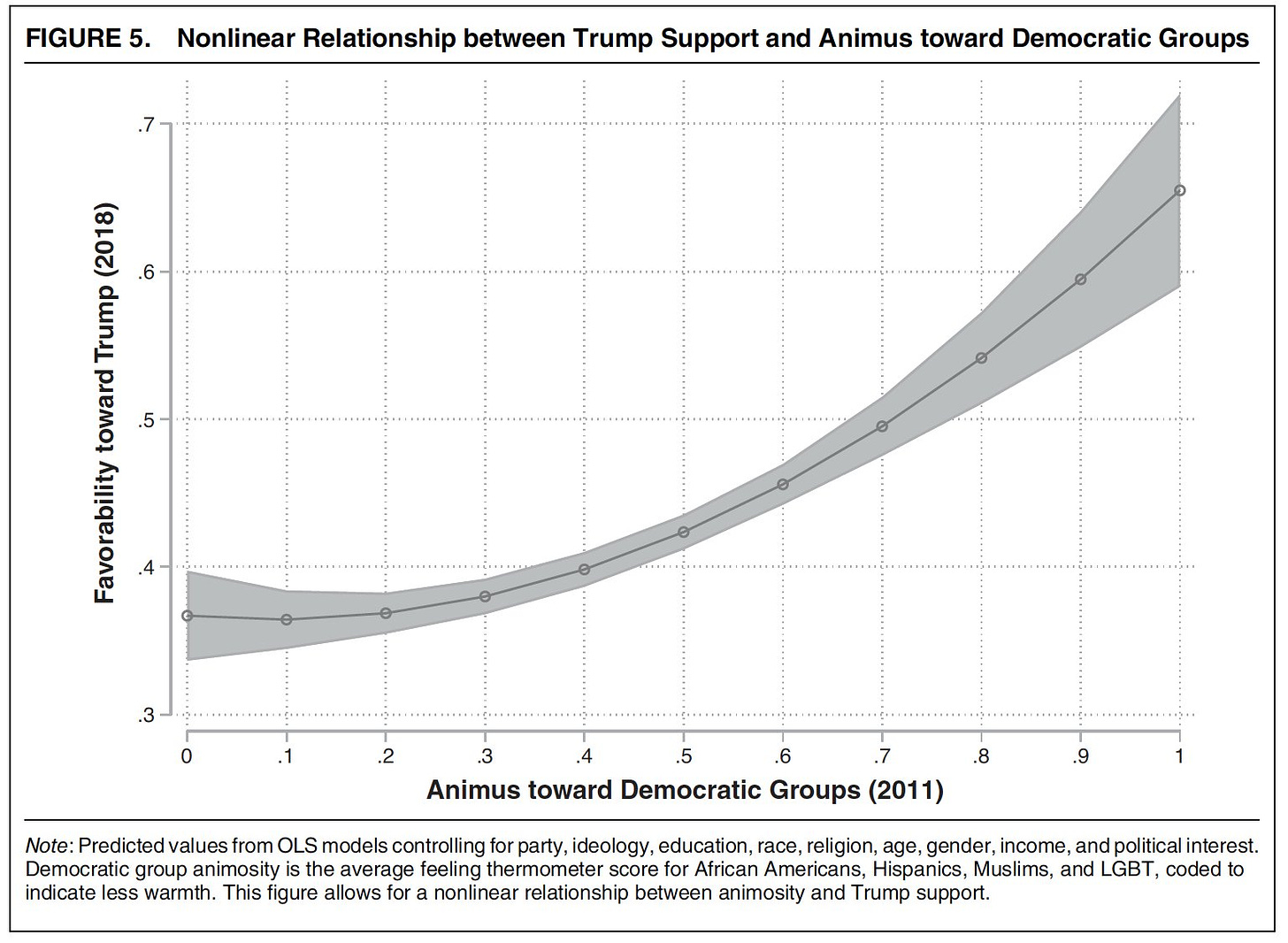
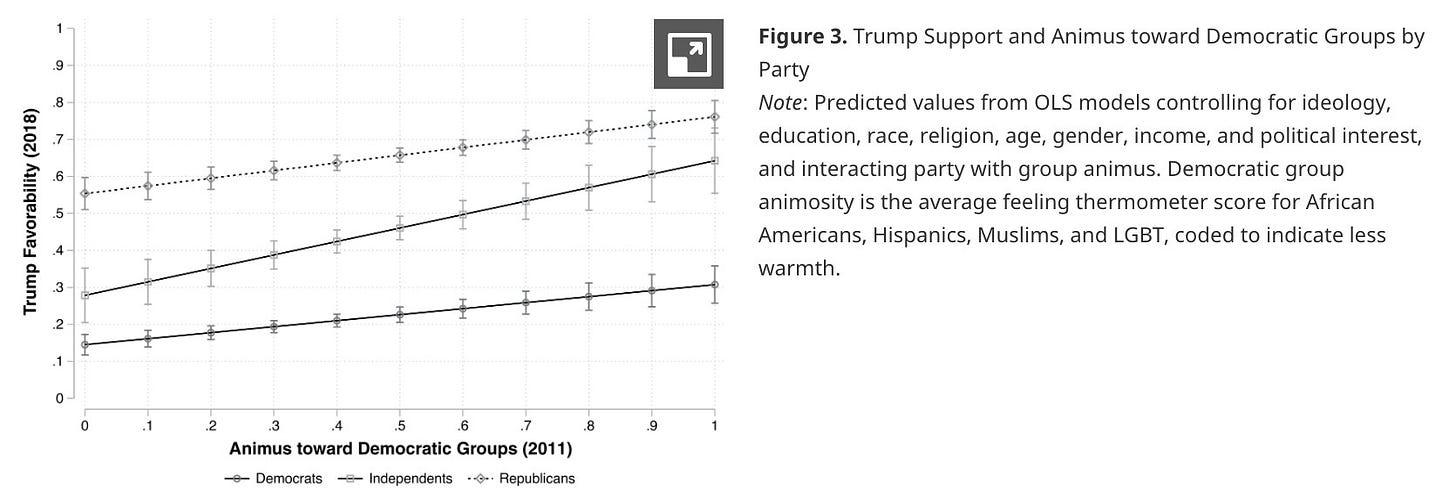
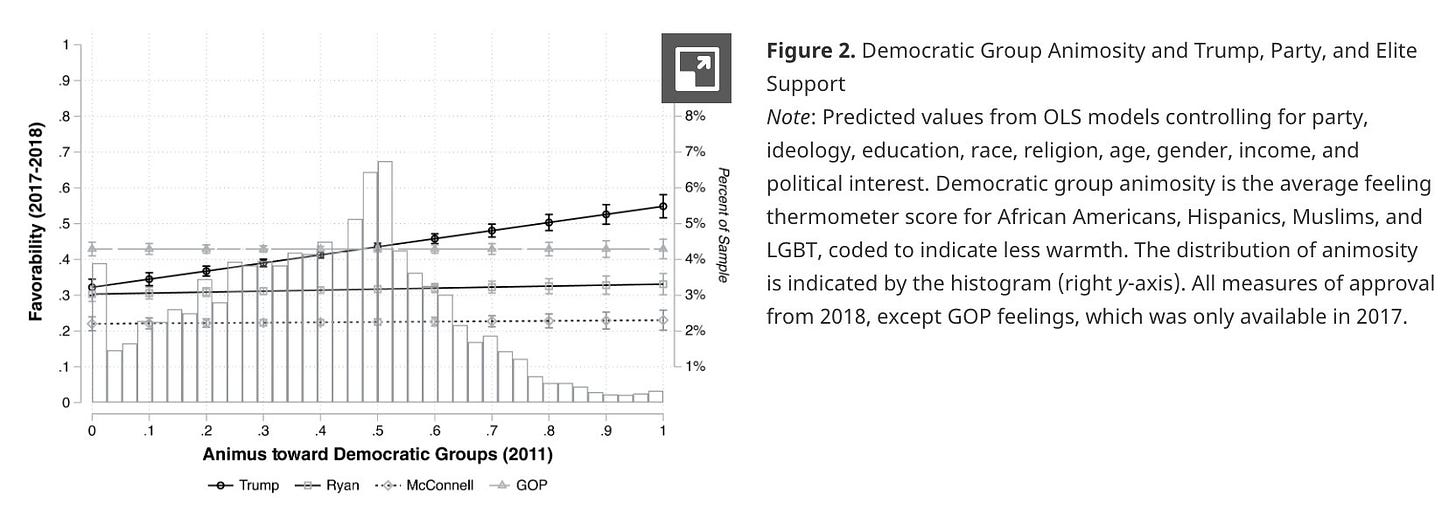
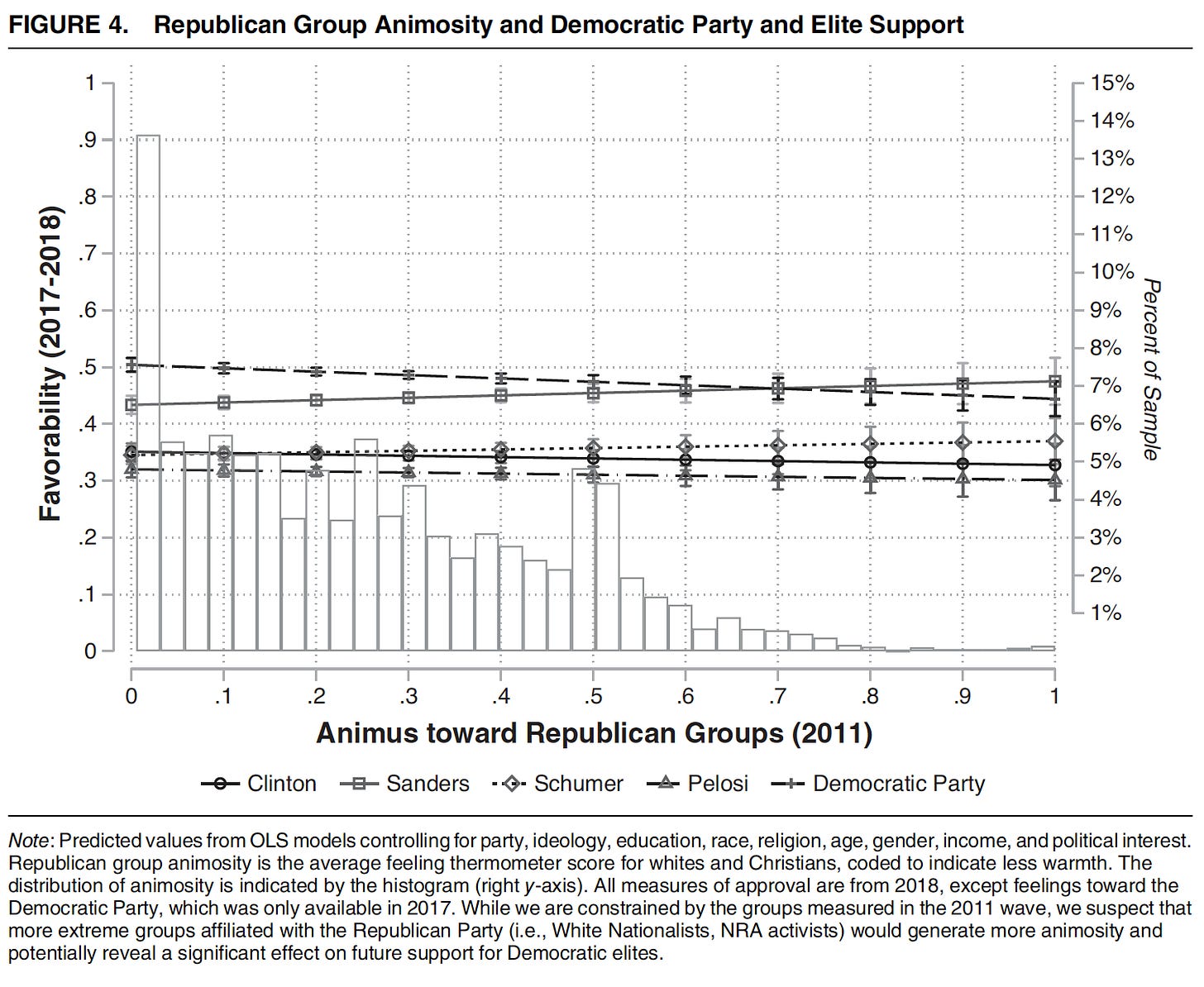
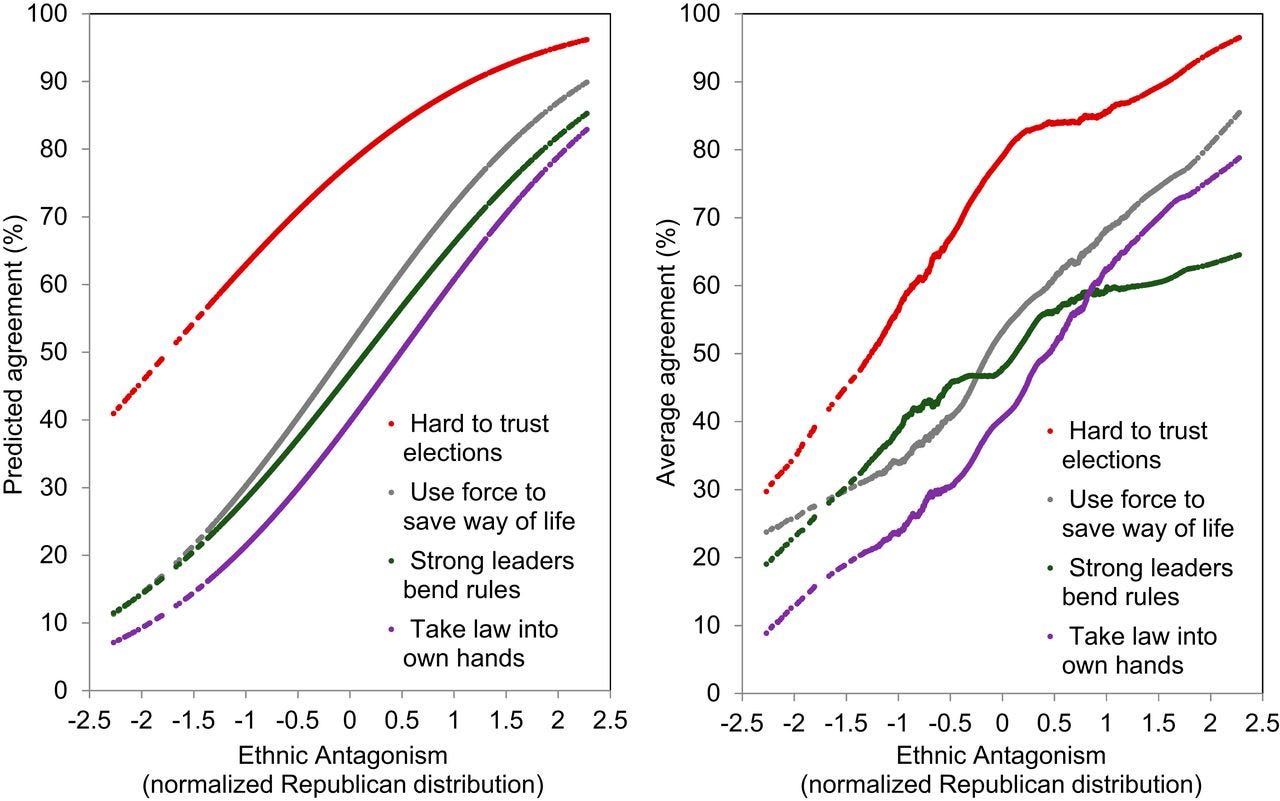
Wanting to read this article got me to subscribe.
Hi Elliott,
Is there any data on whether or not voters who believed the racist Obama birther conspiracy (led by Trump) have anti-democracy beliefs? I assume they do, but it would be good have some data to back that up.
Thanks,
Elliot